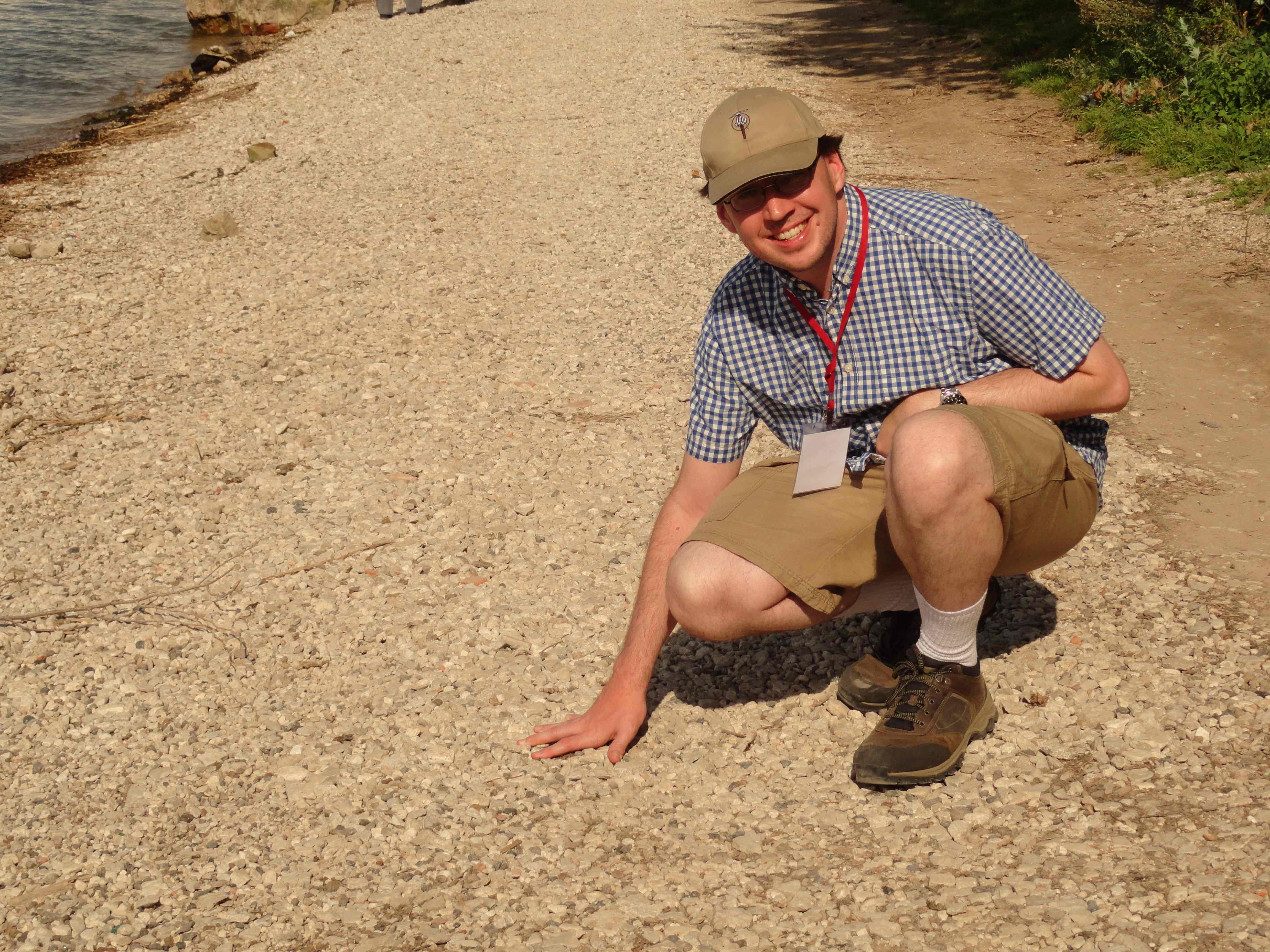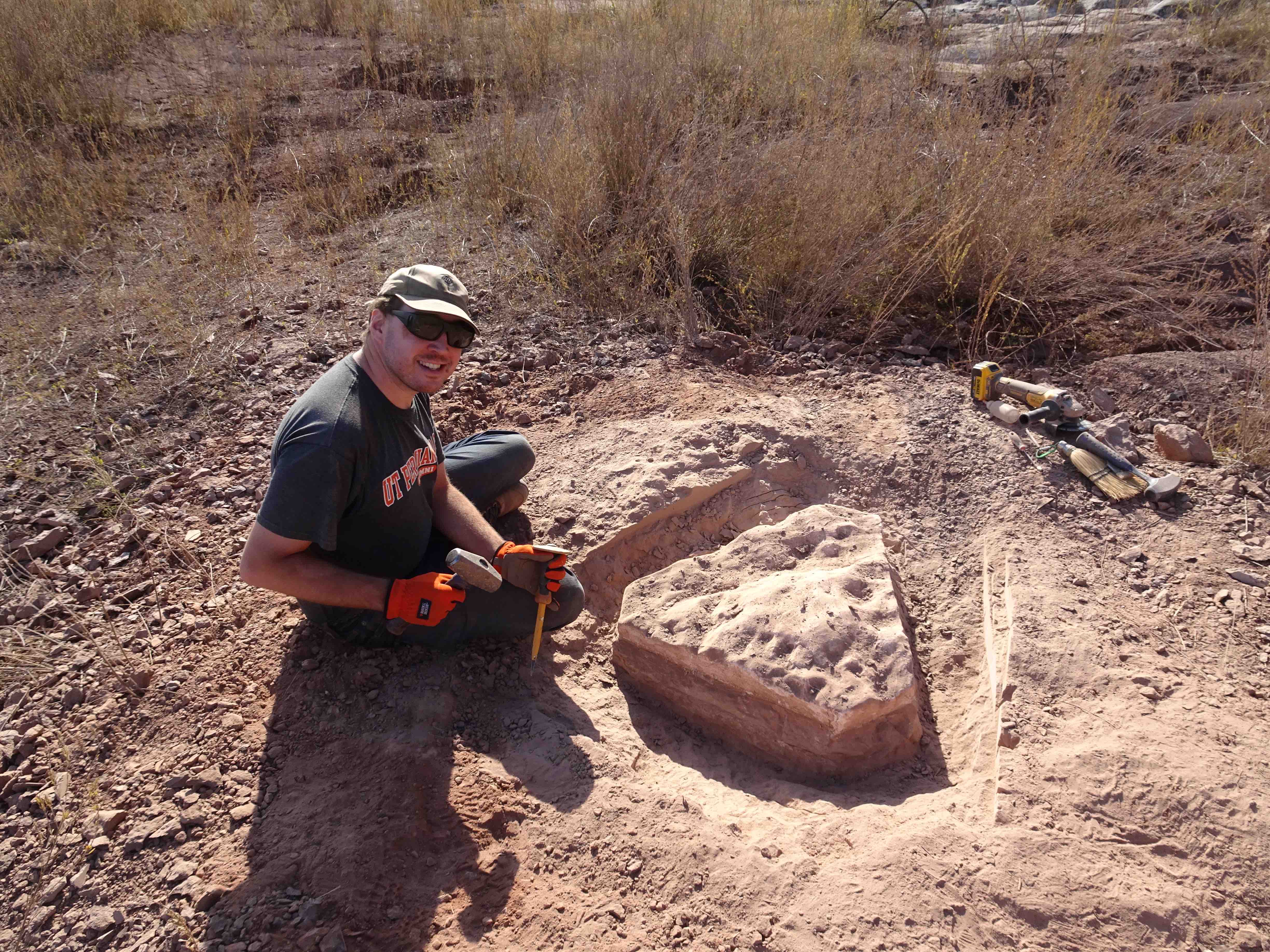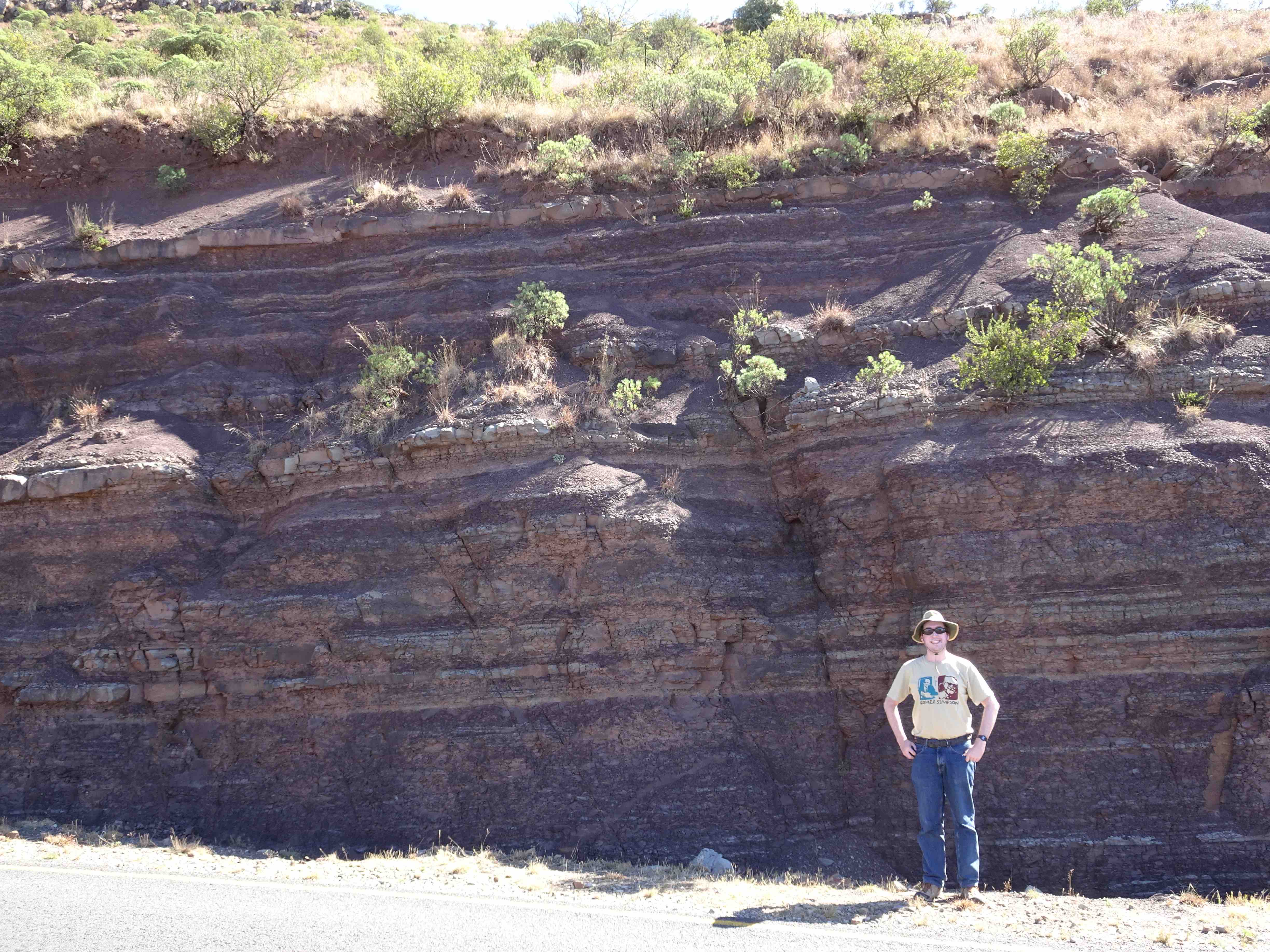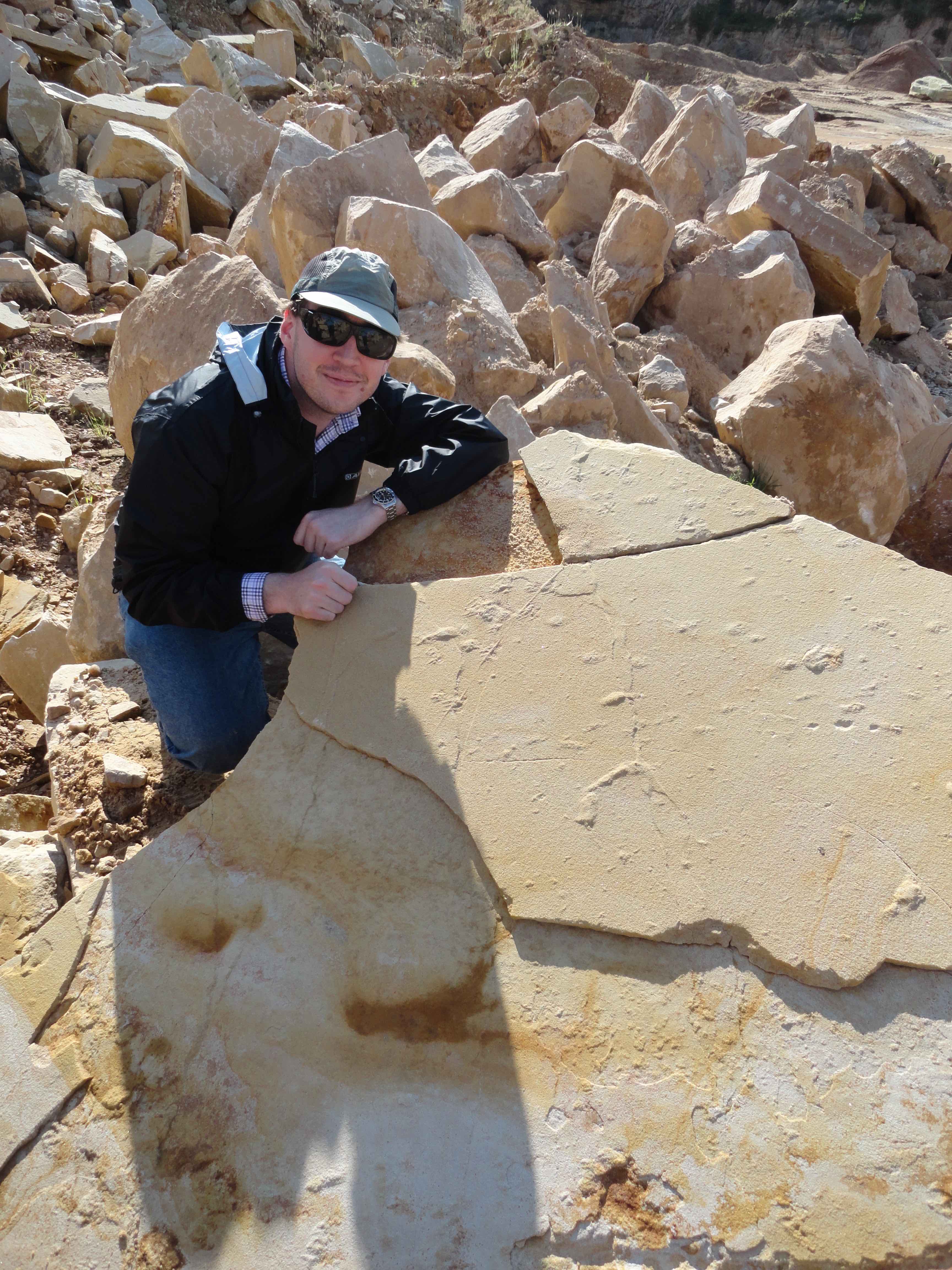Christian Kammerer
Research Curator, Paleontology
christian.kammerer@naturalsciences.org
11 West Jones Street, Raleigh, NC 27601919-707-9939
Education
- PhD in Biological Sciences, University of Chicago, 2009
- MS in Biological Sciences, University of Chicago, 2006
- BA in Biological Sciences, University of Chicago, 2003
Appointments
- Postdoctoral Researcher, American Museum of Natural History, New York, NY 2009–2011
- Postdoctoral Researcher, Museum für Naturkunde, Berlin, Germany 2012–2014
- Research Scientist, Museum für Naturkunde, Berlin, Germany 2015–2017
- Research Associate, Evolutionary Studies Institute, University of the Witwatersrand, Johannesburg, South Africa
- Research Associate, Field Museum of Natural History, Chicago, IL
- Research Associate, National Museum of Natural History, Smithsonian Institution, Washington, D.C.
Research Interests
- Mammal origins
- Ecosystem assembly and faunal changes during the Permo-Triassic
- Functional morphology of extinct vertebrates
- Systematics and evolutionary history of the non-mammalian Synapsida
- Vertebrate response to the end-Permian mass extinction
Dr. Kammerer’s research focuses on one of the most important transitions in the vertebrate fossil record, the shift between the faunas of the Paleozoic and Mesozoic eras. These eras are separated by the end-Permian mass extinction, the most massive extinction event in earth history. Particularly hard-hit by this extinction were the synapsids, the dominant group of land vertebrates at the end of the Paleozoic (in the Permian Period). By the beginning of the Mesozoic (in the Triassic Period), most of the major Permian synapsid groups were either extirpated or decimated, and their ecological roles were largely replaced by a group of reptiles, the archosaurs. The majority of the “modern” land vertebrate fauna was established in the Triassic, with the most successful group of Triassic synapsids, the cynodonts, giving rise to mammals, and the archosaurs giving rise to dinosaurs (including birds) and crocodiles.
Peer-Reviewed Publications
- Kammerer, C. F., Viglietti, P. A., Hancox, P. J., Butler, R. J., and Choiniere, J. N. 2019. A new kannemeyeriiform dicynodont (Ufudocyclops mukanelai gen. et sp. nov.) from Subzone C of the Cynognathus Assemblage Zone, Triassic of South Africa, with implications for biostratigraphic correlation with other African Triassic faunas. Journal of Vertebrate Paleontology e1596921.
- Kammerer, C. F. 2016. A new taxon of cynodont from the Tropidostoma Assemblage Zone (upper Permian) of South Africa, and the early evolution of Cynodontia. Papers in Palaeontology. 2: 387-397.
- Kammerer, C. F., Angielczyk, K.D., and Fröbisch, J. (eds.) 2014. Early Evolutionary History of the Synapsida. Dordrecht: Springer.
- Kammerer, C. F., Angielczyk, J. D., and Fröbisch, J. 2011. A comprehensive taxonomic revision of Dicynodon (Therapsida: Anomodontia) and its implications for dicynodont phylogeny, biogeography, and biostratigraphy. Society of Vertebrate Paleontology Memoir 11. 158 pp.
- Kammerer, C. F. 2011. Systematics of the Anteosauria (Therapsida: Dinocephalia). Journal of Systematic Paleontology. 9: 261–304.
Online Publications
- Kammerer, C. F. 2019. Revision of the Tanzanian dicynodont Dicynodon huenei (Therapsida: Anomodontia) from the Permian Usili Formation. PeerJ 7:e7420.
https://peerj.com/articles/7420/ - Kammerer, C. F. 2019. A new dicynodont (Anomodontia: Emydopoidea) from the terminal Permian of KwaZulu-Natal, South Africa. Palaeontologia africana. 53: 179-191.
http://wiredspace.wits.ac.za/handle/10539/26708 - Kammerer, C. F., and V. Masyutin. 2018. Gorgonopsian therapsids (Nochnitsa gen. nov. and Viatkogorgon) from the Permian Kotelnich locality of Russia. PeerJ. 6:e4954: 1-31.
https://peerj.com/articles/4954 - Kammerer, C. F., and V. Masyutin. 2018. A new therocephalian (Gorynychus masyutinae gen. et sp. nov.) from the Permian Kotelnich locality, Kirov Region, Russia. PeerJ. 6:e4933: 1-28.
https://peerj.com/articles/4933 - Kammerer, C. F. 2018. The first skeletal evidence of a dicynodont from the lower Elliot Formation of South Africa. Palaeontologia africana. 52: 102–128.
wiredspace.wits.ac.za/handle/10539/24148 - Martinelli, A. G., Kammerer, C. F., Melo, T. P., Paes Neto, V. D., Ribeiro, A. M., Da-Rosa, A. A. S., Schultz, C. L., and Soares, M. B. 2017. The African cynodont Aleodon (Cynodontia, Probainognathia) in the Triassic of southern Brazil and its biostratigraphic significance. PLoS ONE 12(6): e0177948.
journals.plos.org/plosone/article?id=10.1371/journal.pone.0177948 - Kammerer, C. F., and Smith, R. M. H. 2017. An early geikiid dicynodont from the Tropidostoma Assemblage Zone (late Permian) of South Africa. PeerJ. e2913.
peerj.com/articles/2913/ - Kammerer, C. F. 2017. Rediscovery of the holotype of Clelandina major Broom, 1948 (Gorgonopsia: Rubidgeinae) with implications for the identity of the species. Palaeontologia africana. 52: 85–88.
wiredspace.wits.ac.za/handle/10539/23480 - Boos, A. D. S., Kammerer, C. F., Schultz, C. L., Soares, M. B., and Ilha, A. L. R. 2016. A new dicynodont (Therapsida: Anomodontia) from the Permian of southern Brazil and its implications for bidentalian origins. PLoS ONE 11(5): e0155000.
journals.plos.org/plosone/article?id=10.1371/journal.pone.0155000 - Kammerer, C. F. 2016. Systematics of the Rubidgeinae (Therapsida: Gorgonopsia). PeerJ. e1608.
peerj.com/articles/1608/ - Kammerer, C. F. 2016. Two unrecognized burnetiamorph specimens from historical Karoo collections. Palaeontologia africana. 50: 64–75.
wiredspace.wits.ac.za/handle/10539/20045 - Cisneros, J., Marsicano, C., Angielczyk, K. D., Smith, R. M. H., Richter, M., Fröbisch, J., Kammerer, C. F., and Sadleir, R. W. 2015. New Permian fauna from Brazil supports a tropical Gondwanan origin for high-latitude tetrapods. Nature Communications. 6: 8676:1–8.
www.nature.com/articles/ncomms9676 - Kammerer, C. F., Angielczyk, K. D., and Fröbisch, J. 2013. On the validity and phylogenetic position of Eubrachiosaurus browni, a kannemeyeriiform dicynodont (Anomodontia) from Triassic North America. PLoS ONE 8(5): e64203.
journals.plos.org/plosone/article?id=10.1371/journal.pone.0064203 - Kammerer, C. F., Nesbitt, S. J., and Shubin, N. H. 2012. The first dinosauriform (Silesauridae) from the Late Triassic of Morocco. Acta Palaeontologica Polonica. 57: 277–284.
www.app.pan.pl/archive/published/app57/app20110015.pdf





